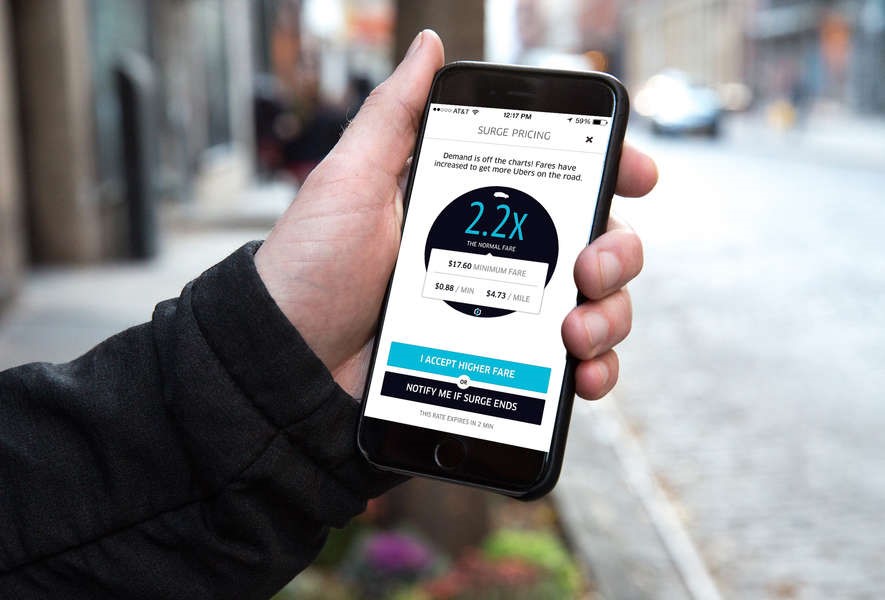Once you’ve become an Uber driver, understanding the larger context of rideshare driving in a busy city and maximising your earnings is an important part of becoming a successful driver.

While there are a number of factors that determine how much Uber drivers earn, one of the most important is dynamic pricing and how well drivers can use it to their advantage.
What does Uber’s surge pricing involve?
When demand for rides exceeds the number of drivers and cars accessible, surge pricing occurs. There are too many passenger requests and not enough vehicles to pick them up, leading to increased response time and ride prices. Surge pricing is a component of Uber’s pricing algorithm that controls supply and demand for peak periods.
The majority of travellers are sceptical of rising prices and don’t understand why they occur. They frequently perceive it as unfair or confusing, because they must pay more for the same distance. It is, however, founded on a simple economic principle.
How is Uber’s surge price resolute?
Surge pricing is based on the trade-off model of producers and consumers in economics. Simply put, when demand exceeds supply, the price rises. When the contrary occurs, the price drops.
This method is used by Uber to ensure that every passenger receives a trip. It’s also an excellent incentive for drivers to go where the demand is higher in order to make more money, resulting in more drivers becoming accessible and lower ride pricing. It’s a recursive process that benefits both drivers and passengers.
Surge pricing is performed using a simple exponent that is activated by a lack of drivers. This is accessible in the Uber app for both drivers and passengers, and it may change at any time depending on how quickly demand grows.
Surge pricing has no impact on the commission paid to Uber drivers for each journey. However, the additional cost is passed on to the drivers, making it a perfect opportunity to expand your earnings as a driver.
When does Uber charge a surcharge?
A variety of influences could have an impact on dynamic Uber pricing. The most important points are listed below.
1. Busy hours
Typically, rush hour occurs between 7 and 10 a.m. and 2 and 8 p.m. People are leaving and returning from work during these hours, putting a strain on congestion and car availability, resulting in a cost increase.
2. Night Driving
There are lots of cars accessible at night due to less traffic. If you’re a rideshare driver, it can be worth adjusting your schedule for a night shift now and again if you want to increase your profits.
3. Weekends
Weekends are the most costly days of the week. People go to parks, parties, restaurants, clubs and events and they are more active in travelling from point A to B. This increases demand for rideshare drivers, resulting in rising prices.
4. Bad Weather
Any type of bad weather, be it rain or snow, makes crossing the city far more difficult, especially for extended periods of time. As a result, there is a high demand for Uber vehicles.
5. Special events
Any major event in the city, such as concerts, tournaments, or marathons, where large numbers congregate and depart at the same time, might make finding an Uber nearly hard. The higher the cost, the less the supply. This is where you should be if you want to make more money as a driver.
6. Holidays
People visit their families and friends on New Year’s Eve, Halloween, and even Christmas. Uber drivers make the most money around the holidays because they not only make a lot of money, but they also get to drive in less traffic.
7. Strikes or protests
Normal transportation is interrupted whenever a train or bus strike occurs, making rideshare drivers much more valuable. Hundreds of people congregate in the same places during protests, causing congestion.
Do Uber drivers pay extra when there is a surge in demand?
Yes. During a surge, the difference in pricing is passed on to the drivers, but the Uber commission remains unchanged. Surge pricing, however, might have a negative impact on drivers.
On the one hand, it allows people to make more money during a surge because the difference in prices is credited to their account, and it encourages them to cover as many rides as possible. Many Uber drivers pursue the surge because they know it’s where they can make more money.
Be First to Comment